La Montagne – the daily newspaper chain that serves most of the villages and cities in the deep heart of France – recently put together a list of “things you don’t know about the Place de Jaude” in Clermont-Ferrand.
Some of the historical tidbits cited by Simon Anthony in his article were already familiar to me: the fact that the statue of Napoleon’s General Desaix is not much appreciated by locals, and the fact that the city’s Opera was deliberately built in white-colored stone mostly to combat Clermont’s reputation as “la ville noire” because of all the black lava stone used in so many public buildings. I had heard before, too, how a great ‘urban renewal’ project had been undertaken to create the view down the broad Rue Blatin from the Prefecture building to highlight the iconic image of the great volcanic peak of the Puy de Dome.
The beating heart of Clermont-Ferrand
So I thought I knew pretty much everything I needed to know about this space. The beating commercial heart of the city, the Place de Jaude is a vast open space surrounded by stores, cinemas, and restaurants. On any reasonably nice day (even Sundays when most stores are closed) crowds of people stroll the square, which is book-ended by the 17th-century Church of Saint-Pierre-des-Minimes at one end and by a multi-story, contemporary shopping complex at the other. This is where people gather to celebrate, to party, to learn, or just to get out of the house and into the company of other people.
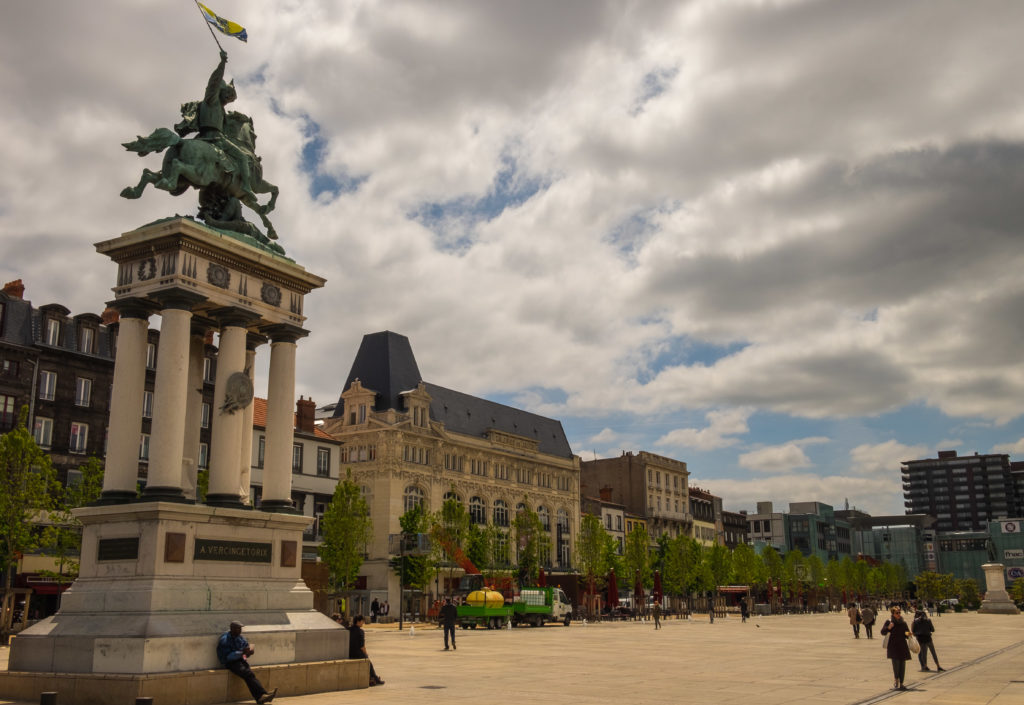
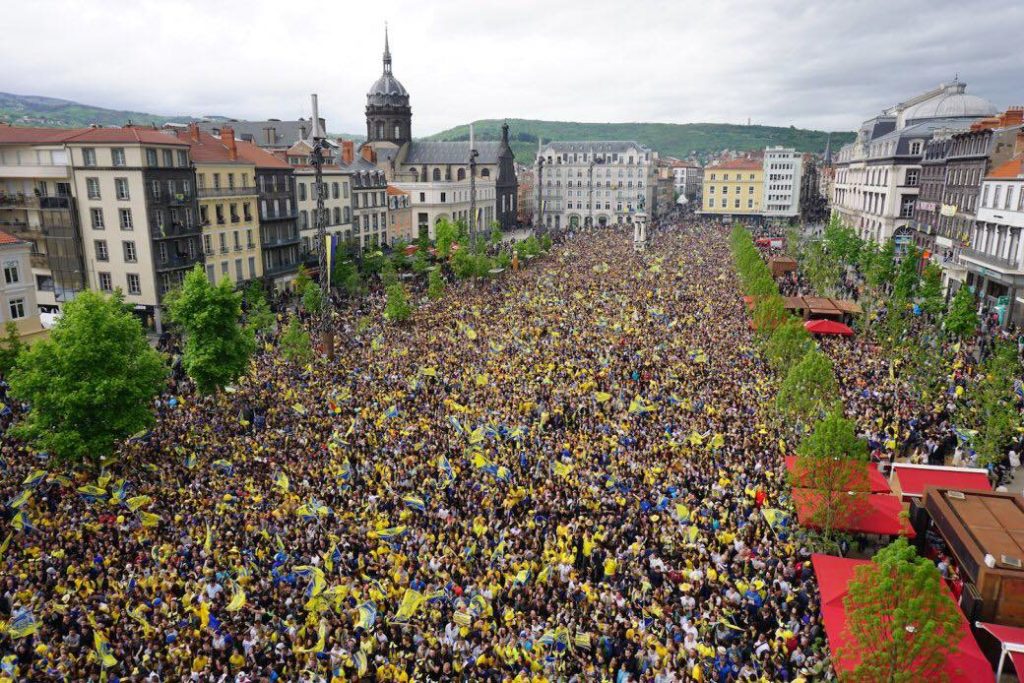
There’s always something happening here – Jaude is where people come when there’s something to protest, but also when there’s something to celebrate. When the local ASM Rugby club won the national championship of France in 2010 and again in 2017, more than 100,000 turned out to watch the matches on giant screens in the Place de Jaude; it happened again when France won the World Cup of Football last month, and each time local seismologists reported a noticeable tremor originating from the square at decisive moments in the game.
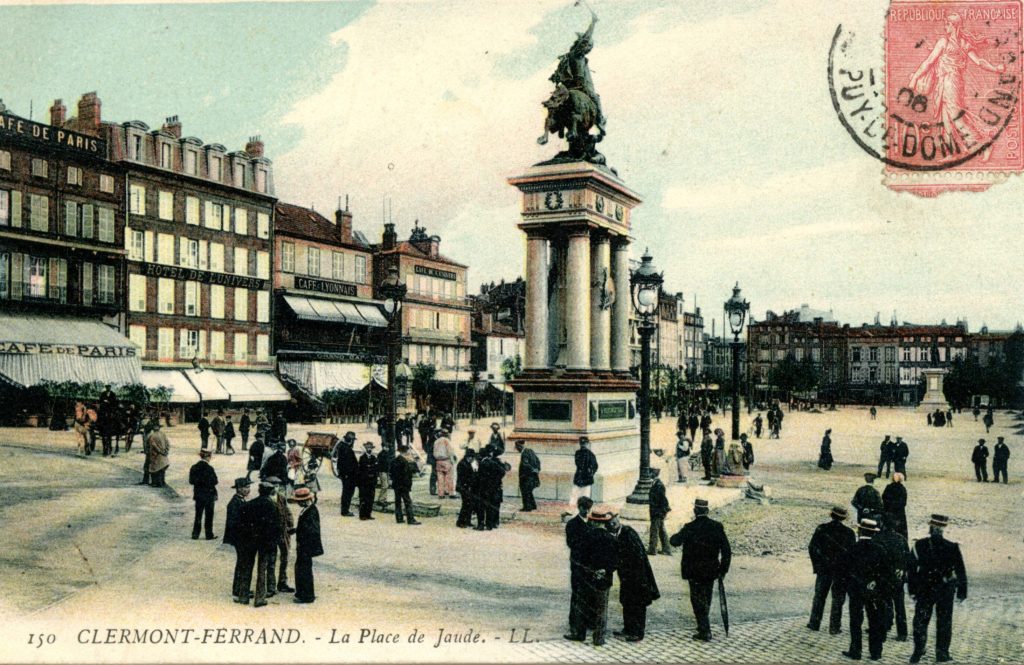
And on any “normal” day, you’re likely to find a stage set up for a concert, or a grid of individual basketball courts set up for a half-court tournament, or a ferris wheel rising high above the city center all through the Christmas season. Because Clermont-Ferrand has such a large population of university students and Michelin expats from around the world, you’ll often hear many different languages (or many different accents of French) spoken in all the open-air cafes and bars that open onto the square. Two of the city’s main tram stops and three different cinema complexes are located within the perimeter, guaranteeing a constant flow of people through the space.
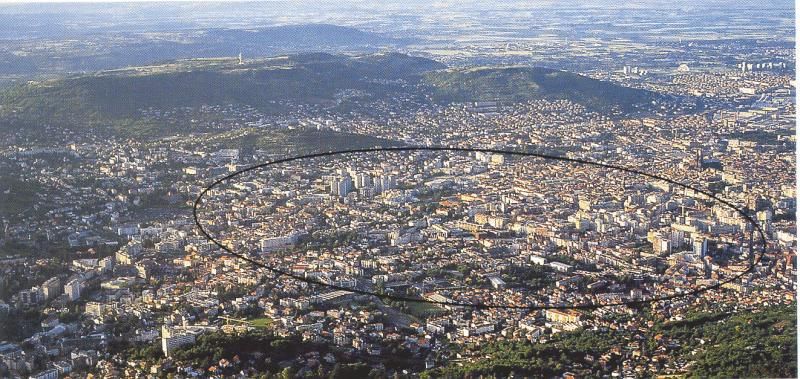
"Secrets of Jaude"
But a couple of La Montagne’s anecdotes about the Place de Jaude caught me by surprise. I did not know, for example, that this great square actually sits on in a shallow maar, a volcanic crater that was last active around 150,000 years ago. (It was the lava flows from this crater that built up the steep little butte occupied by Clermont’s famous “black cathedral” just up the hill from this square.)
And I was only vaguely aware that the church of Saint-Pierre des Minimes was a 17th-century reconstruction of a much older church. It sits off in a corner of the Place de Jaude by itself, and it always seemed like an afterthought to me, compared with the city’s much older and finer Cathedral and the medieval basilica of Notre Dame du Port. In fact, the original 13th-century church was a few blocks from here, in the area still occupied by the ancient Marche Saint-Pierre. Four hundred years later, when the city needed a new church to replace the original, the convent of the Minimes order was “requisitioned” to fill the need.
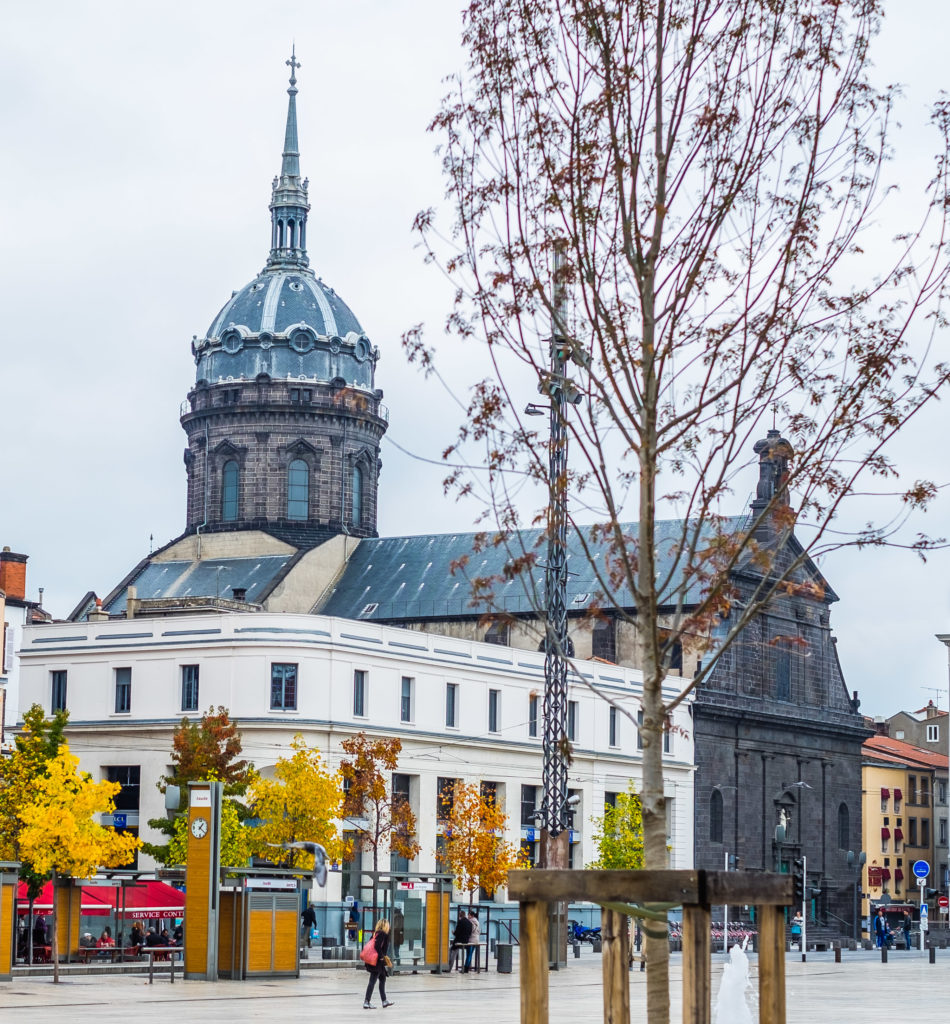
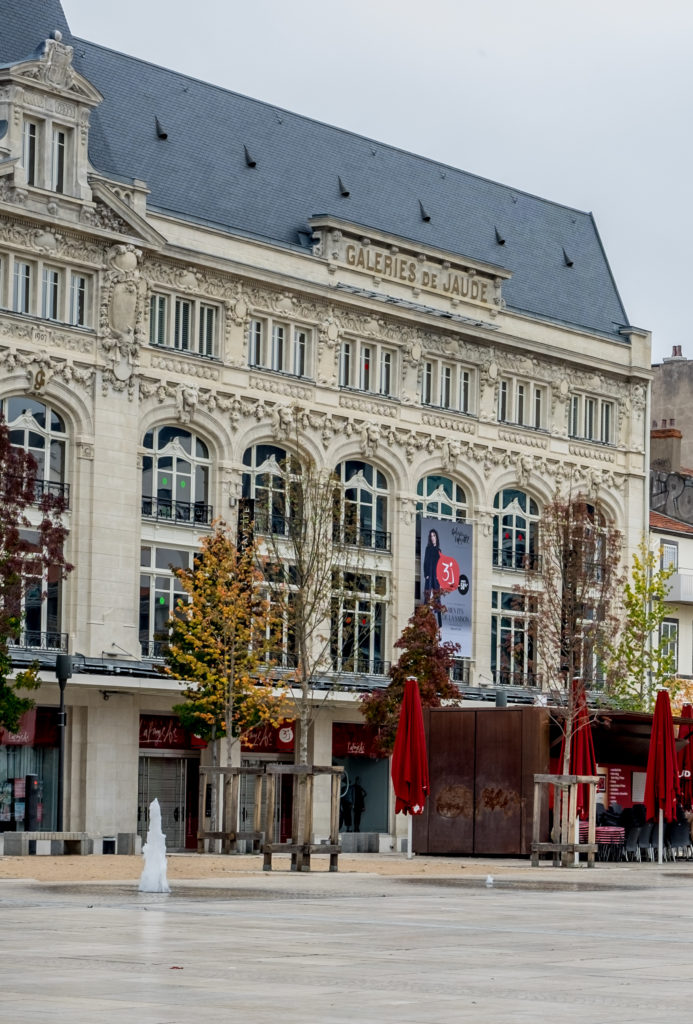
Also surprising? The Galeries Lafayette, one of the rare early 20th-century department stores that still seems as vital today as it might have when it opened 110 years ago in 1907, dominates the eastern side of the Place de Jaude. As nice as the classic old building seems, though, it is visibly asymmetrical – there’s a tower on the left side of the façade, but not on the right. As La Montagne says, the explanation is simple: the owners of the department store never succeeded in buying out the neighboring building, so they shoehorned their planned construction into the space they had available!
How a Gallic Chieftain came to the Place de Jaude
My favorite anecdote in Simon Anthony’s list, though, is the story of how the statue of Vercingetorix came to dominate the north end of Clermont’s Place de Jaude.
If you don’t know the background story: go to Google and search for images of “Vercingetorix” and you’ll get an idea why the unassuming mesa of Gergovie, just south of Clermont-Ferrand, holds such mythic power in the history of France. This is the site of the only defeat Julius Caesar ever suffered as he and the armies of Rome swept through ancient Gaul. Vercingetorix (a Gallic chieftain) and his Arverni tribesmen delivered the blow – reputedly by taking to the fortifications on Gergovia and using the advantage of higher ground to drive off Caesar and his armies.
You can read the whole story here but suffice it to say that the legend of Vercingetorix is firmly ensconced in the national mythology of France – he’s a source of great national pride. Napoleon raised a statue to him at Alesia, and painters have come back to him as an inspirational subject over and over again. He’s a character in the Asterix & Obelix comics.
So it’s not surprising that les Clermontois wanted to express their pride in this local hero (and of course add to the city’s inventory of attractions for tourists). Who better to enlist for the project than Auguste Bartholdi , the giant of French sculpture best known for creating the Statue of Liberty that stands as a symbol of New York City in the U.S.?
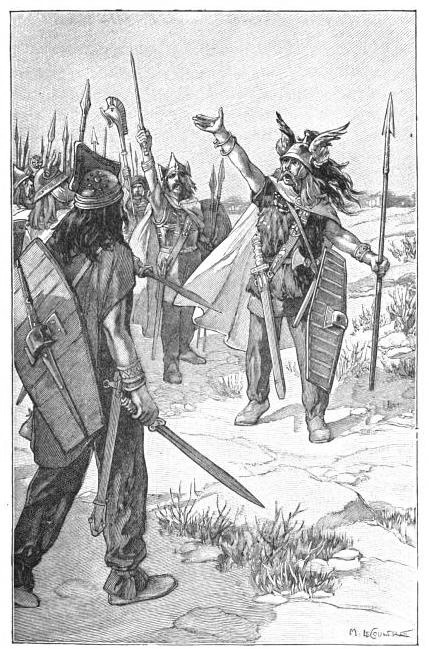
Bartholdi proposed a fierce representation of the great warrior, charging on horseback into the battle with Caesar. His mount is captured in the act of leaping over the body of a fallen enemy soldier, so none of the horse’s feet touch the ground. It’s a dynamic picture of the great chieftain, even if the clothes he’s wearing are more typical of Gallic tribes 1,000 years before Vercingetorix, and even if the sword Bartholdi put in his hand is often replaced by the flag of the local ASM rugby team.
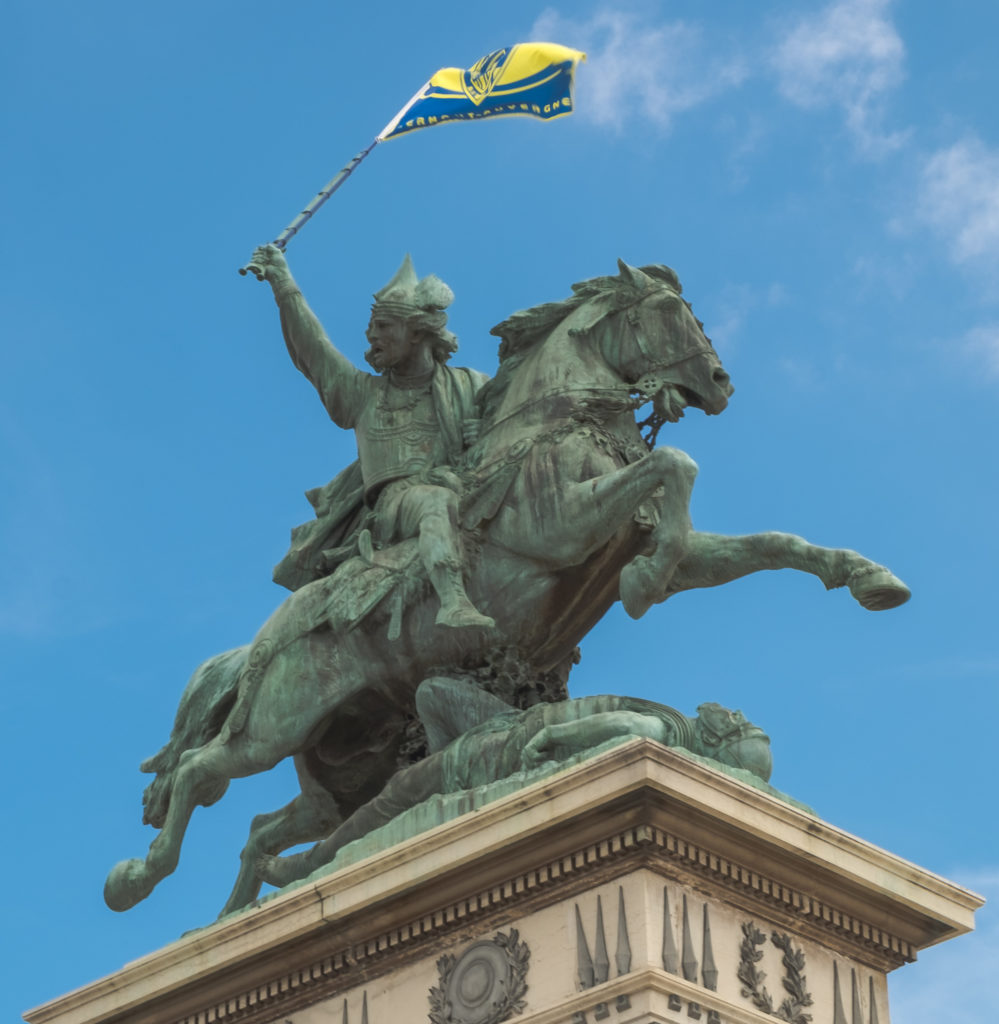
The original idea was to make an enormous (25 meter) version of the statue and to place it on top of the Plateau de Gergovie where the battle (allegedly) occurred – it would have been visible as far north as Riom! But the project was to be funded by a public subscription program, and the local boosters just could not raise the money required for such an imposing monument.
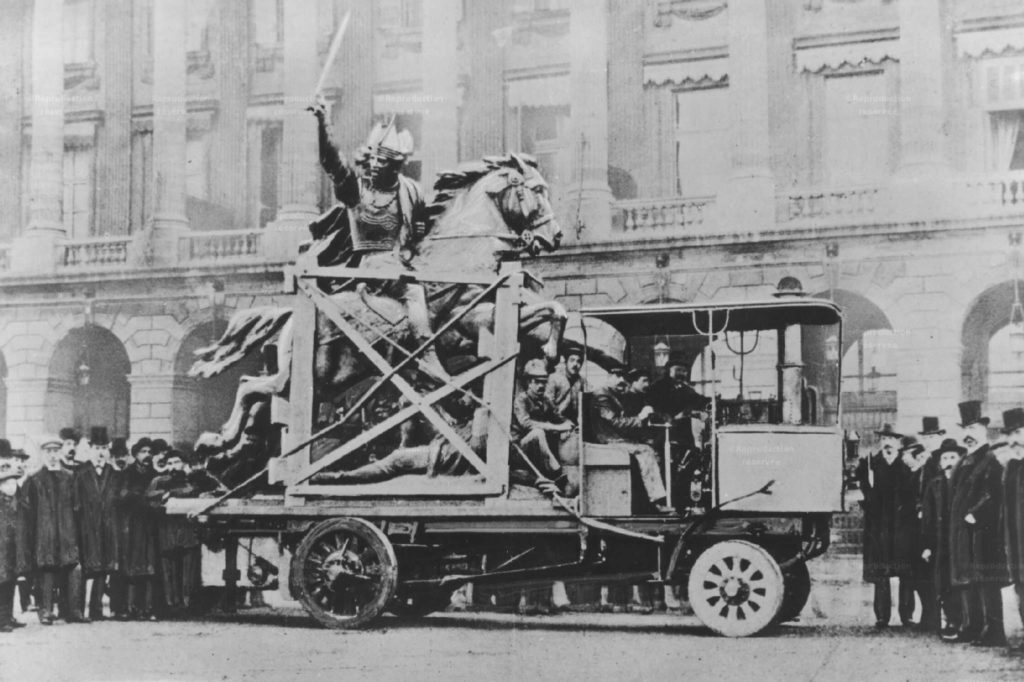
The urban spark in the Place de Jaude
So the Place de Jaude, a familiar gathering place since people first settled in this region thousands of years ago, still has some secrets of its own. As Simon Anthony documents, many of these aspects are not even known to the crowds of office workers who sit on the steps of the Centre Commercial with their jambon beurres for lunch, or to the university students and factory workers who converge en masse whenever there’s a great event to celebrate. But from my own experience, I can say there’s a definite vitality, an urban spark you can feel in this space – and I have to believe some of that energy flows from the secrets of the rich history hidden beneath this pavement!
Do you know a place in France that has a surprising or unusual history? Please tell us about it in the comments section below – and take a second to share this post with someone else who loves the history and culture of France!
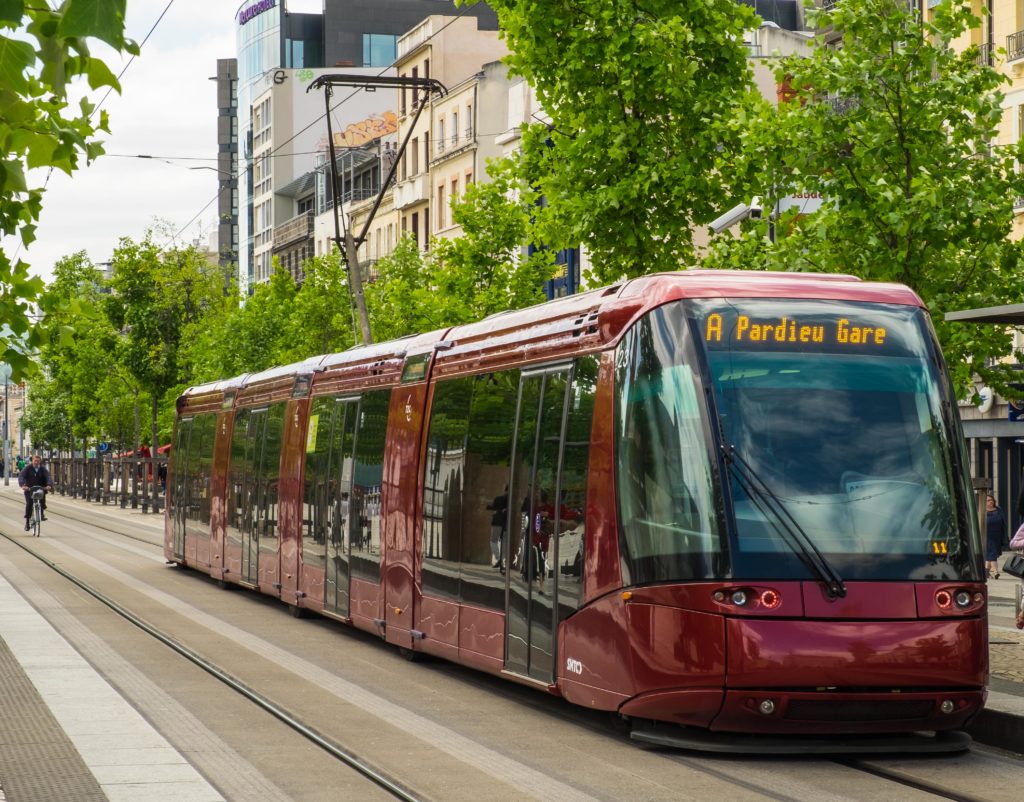
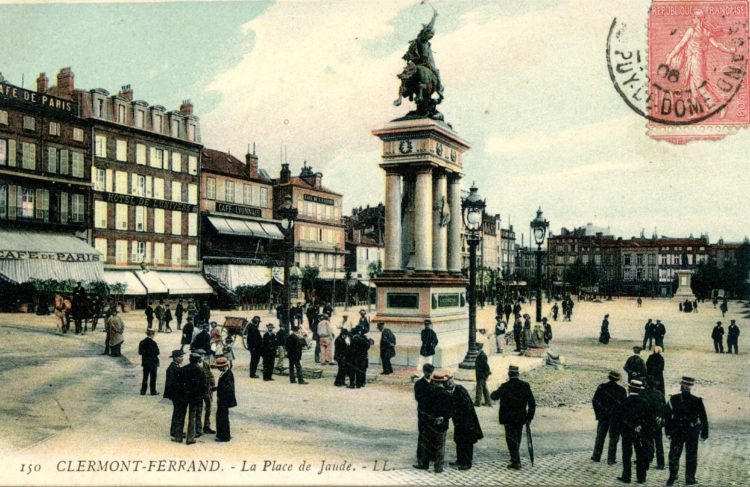

It’s very interesting that the Vercingetorix statue was sculpted by the same artist as our own Statue of Liberty. Thank you for digging out all these interesting facts and stories our home away from home, Richard. Elizabeth and I really look forward to each new post.
Thanks, Steve – it’s good to hear from you!